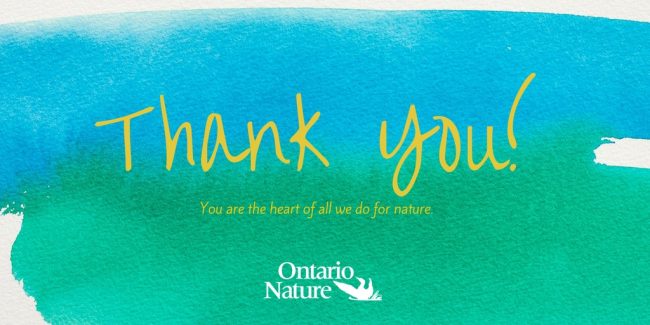Ontario Nature Blog
Receive email alerts about breaking conservation
and environmental news.
© Lora Denis
American toadlet in hiding © Esperanza Salas
Last Saturday, twenty-nine people, ranging from long-time field naturalists to an eight-year-old amphibian enthusiast, gathered at Reilly Bird Nature Reserve near Deep River, Ontario in the hopes of spotting eastern red-backed or spotted salamanders.
After Ontario nature placed thirty cover boards on the reserve last fall, conservation science staff invited the public to become community scientists and help them look for salamanders this summer. We planned to submit the data to the Ontario Reptile and Amphibian Atlas – a community-science project that tracks distributions and spatial trends of reptiles and amphibians across the province. Since we had a moderate amount of rainfall in the days leading up to the event, we hoped that the underside of the boards would be damp enough for our amphibian friends.
After overturning several cover boards, we quickly realised that the soil underneath most of the boards was not wet enough to harbour salamanders. Fortunately, the reserve had an abundance of downed-wood, so participants eagerly began sleuthing under rotting logs and rocks. We were lucky enough to see seven of these elusive creatures in addition to dozens of American toadlets, a spring peeper and a few wood frogs.
In the afternoon, Ontario Nature led a guided hike up the scenic Terrace Trail to look for pollinators and identify orchids such as rattlesnake plantain and maples, including striped maple. Participants were treated to an impressive view of the dense mixed forest across the Ottawa River from the lookout point, reminding them about the importance of protecting forests, not only for their natural beauty, but also for their plant and insect diversity.
All in all, the event was a great opportunity for local families to hike a new trail, experienced field naturalists to pass their knowledge on to nature enthusiasts and Ontario Nature to monitor the abundance of salamanders in eastern Ontario.
Thank you to our funders, the Ontario Trillium Foundation and TD Friends of the Environment Foundation, for making this event possible.


Gananoque Lake Nature Reserve © Smera Sukumar
Hi. I believe I read that we can assist preservation of Blanding’s turtles, in particular, if we report sightings. I have seen a Blandings three years running, in June, at the same location. I have checked the photo with others far more experienced than I.
Can you tell me where I report this? I have not been able to find where I do this.
Thanks for all you do. It’s important!
K. de Pena
Hi Katia,
Any reptile and amphibian observations in Ontario can be reported via posting to the iNaturalist project “Herps of Ontario” found here https://www.inaturalist.org/projects/herps-of-ontario. Alternatively or in addition, species at risk like Blanding’s Turtles can be reported directly to the Natural Heritage Information Centre (NHIC) using their online reporting form here: https://engage.ontario.ca/en/content/natural-heritage-information-centre-nhic-observation-reporting-form.
Noah Cole
I observed a large Blandings turtle measuring 11 inches from the front to the back of the shell. It was crossing Wallace Road in North Bay at residence 690 wallace rd, north bay. 17:00 hrs on june 29th 2022. Photo available. Unusual for our area. 60% of turtles are painted and 40% are usually snappers.
We found a blue spotted salamander this weekend in Moore Falls, ON! Would like to share pictures!
How can I do that?
Hi Kimberley,
if you would like to donate your photos so we can use them to help further promote awareness about blue-spotted salamanders, amphibians and reptiles you can let us know that you would like to do so and email info@ontarionature.org, if you would like to post them as your own photos, visit facebook.com/ontarionature and make a post – they will appear in the right-hand column for people to notice!
Best regards,
ON Noah